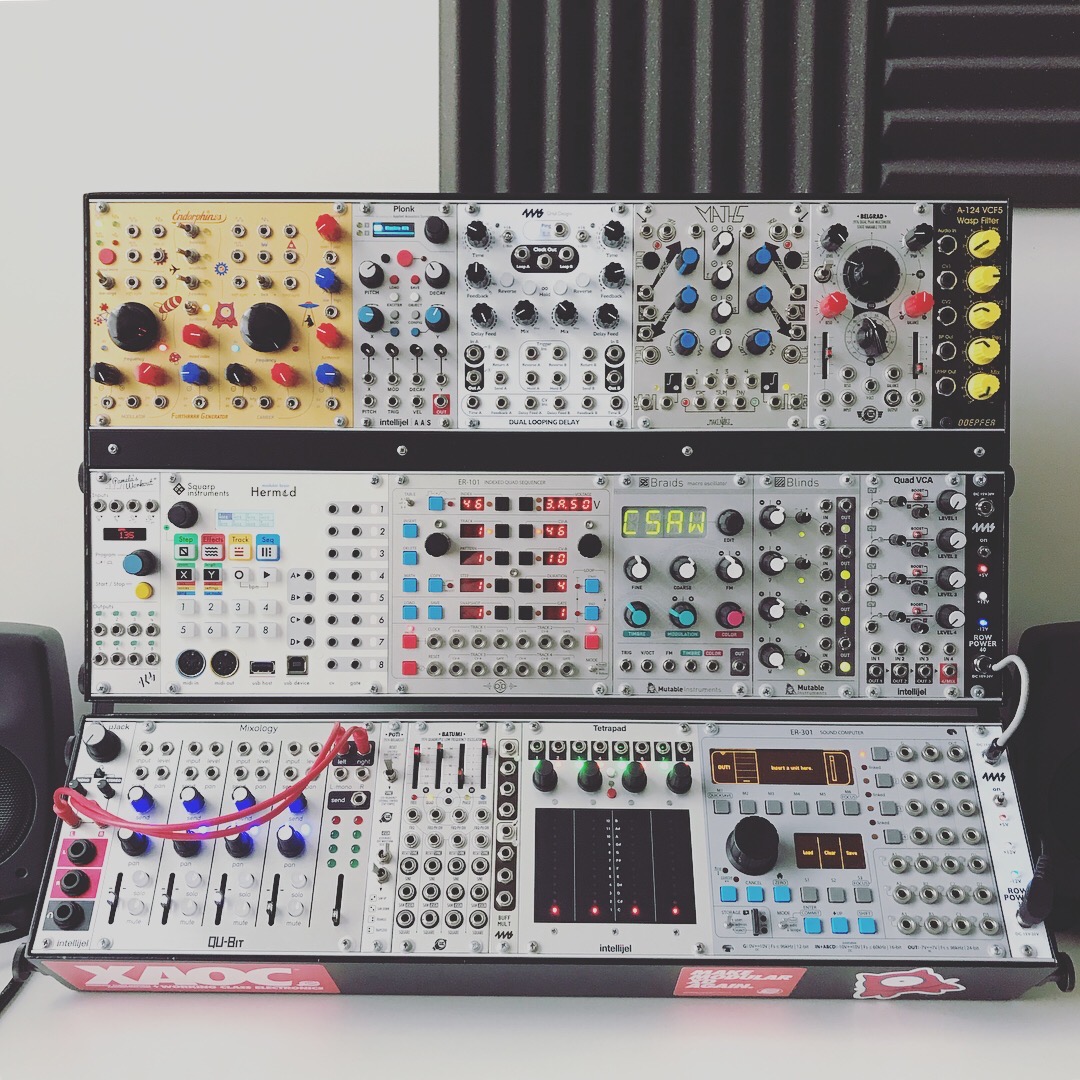Welcome to my fake company!
Silly Sounds is an amalgamation of my wants to code, market, and do something ambiguously musical. Making a fake eurorack development company seemed to be the best way to do that. Most of my projects under this label will be looking into different audio programming concepts I come across while I make any eurorack modules that I think would be fun to have. I’m sort of getting ahead of myself here, let me lay out some background first.
Background
If you’re familiar with VCV Rack you can probably skip ahead. Otherwise, here is a crash course for Eurorack as I understand it. Synthesizers commonly have multiple parts working in unison including something to make sound (commonly waveforms), something to filter that sound to add some depth, something to keep track of time and possibly sequence notes, and many, many more. All of these tools are implicitly part of the synthesizer though, which allow different parameters to be altered but always function and communicate in specific ways. Somewhere in the 50s to 60s someone moved towards making a more “modular” system, something that can have standard voltage inputs and outputs for each part of the synthesizer so you can customize exactly how different components communicate and are controlled. This has spiralled since then, and dawned the birth of Eurorack in the 90s.

Eurorack takes modular synthesizers one step further, and breaks components down into their own panels. Now users can pick and choose which modules they want to use in their setup, and since things are standardized, they can really combine any module from any manufacturer. This birthed a lot of really interesting sounds and equally confusing and expensive setups, which I am both excited and fearful to invest in. Thankfully, there are less costly options to play with modular synthesis, one of those being virtual synthesizers. There are many types of virtual synthesizers, but the one Silly Sounds modules are made for is VCV Rack. This open-source beauty is free to use and also has massive developer support, allowing anyone to create virtual modules and submit them to be on the official module library. I am heavily invested in audio programming right now, and as someone with minimal signal processing experience, I thought this would be a great place to start.
Current and Future Modules
Silly Sounds has been officially released, and all modules can be found in the VCV Rack Library! Any module code can be found at my Silly Sounds GitHub repo, with each having their own writeup here on how they work and how they were made. As it stands there are three modules (with links to each article):